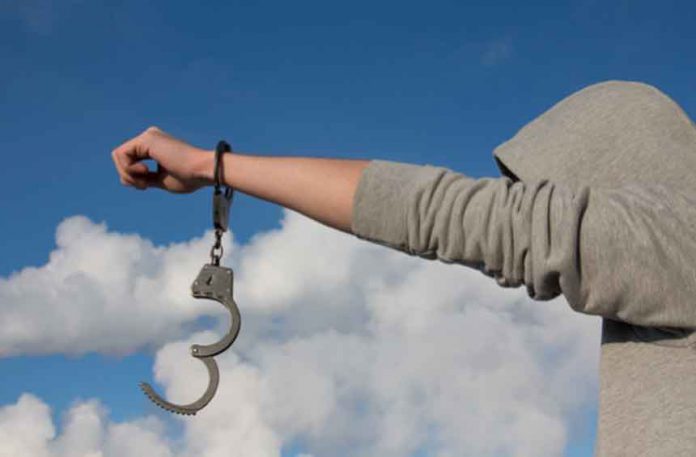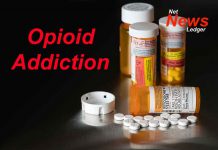Thunder Bay – One of the components of crime in Thunder Bay, and many other centres is the addiction to drugs and alcohol.
The gangs and their guns would not be coming into our city if there was not a demand for their poisons. The deaths from violence and overdoses that these criminals bring to our city and region along with the family trauma as a result is all because people are demanding the “products” that these criminals supply.
Dealing with the issues of addiction will stem a lot of the property crime, and simply put reduce the shoplifting that many businesses are experiencing. It would also halt what is often the revolving door that the criminal justice system has all too often become.
It sounds so simple. Stop people from using drugs and the problem would go away.
The fact is addiction and its root causes are complex issues. They take real solutions that involve as discussed in this series of articles, engagement from the federal, provincial, municipal, Indigenous leadership and Indigenous communities.
The criminal justice system can play a significant role in helping people overcome addiction by implementing various strategies and programs that address both the punitive and rehabilitative aspects of addiction
If it were easy, chances are it would be done already, however getting serious about this issue would help save lives and break the seemingly endless cycle of despair and addiction.
How can the Criminal Justice System help?
Here are some ways the criminal justice system can contribute to addiction recovery:
- Diversion Programs: Instead of pursuing strict legal penalties, the criminal justice system can divert individuals with substance use disorders to specialized programs. These diversion programs, such as drug courts or treatment courts, aim to provide alternatives to incarceration by offering comprehensive treatment, counselling, and support services. They focus on addressing the underlying causes of addiction while holding individuals accountable for their actions.
- Treatment within Correctional Facilities: As discussed in our article on Monday, the number of inmates in correctional facilities with issues of addition is massive. For individuals who are already in the criminal justice system, providing access to evidence-based addiction treatment while incarcerated is crucial. Offering comprehensive treatment programs, including detoxification, counselling, behavioural therapies, and medication-assisted treatment (MAT), can help address the physical and psychological aspects of addiction. Continuous support during and after incarceration improves the chances of successful recovery and reduces the risk of relapse upon release.
- Education and Prevention Programs: The criminal justice system can contribute to addiction recovery by implementing educational programs aimed at preventing substance abuse and promoting awareness. These programs can be implemented within correctional facilities, probation services, or community outreach initiatives. By providing accurate information about the risks and consequences of addiction, individuals can make more informed decisions about their substance use, reducing the likelihood of relapse.
- Collaboration with Treatment Providers: Establishing strong collaborations between the criminal justice system and community-based treatment providers is crucial. This partnership allows for seamless transitions from incarceration to community-based treatment programs, ensuring continuity of care. By coordinating efforts and sharing information, treatment providers and the criminal justice system can tailor interventions and support services to the specific needs of individuals in recovery.
- Aftercare and Reentry Support: Successful reintegration into society is essential for sustained recovery. The criminal justice system can assist individuals by providing access to aftercare services, such as transitional housing, vocational training, employment support, and continued access to treatment and counselling. By addressing the social, economic, and environmental factors that contribute to addiction, individuals have a better chance of maintaining long-term recovery and reducing the risk of recidivism.
- Training for Law Enforcement and Judicial Personnel: Training law enforcement officers, judges, and other personnel within the criminal justice system on addiction, its impacts, and available resources can foster a more empathetic and informed approach. This training can help reduce stigma, improve understanding of addiction as a disease, and encourage the use of diversionary programs and treatment-oriented approaches rather than solely relying on punitive measures.
How can a Healing Path Begin?
Starting a person addicted to drugs or alcohol on a path to healing requires a comprehensive approach that addresses their physical, psychological, and social needs.
Here are some crucial steps to consider:
- Recognize and Accept the Problem: The first step is acknowledging the addiction and accepting that it is a problem that needs to be addressed. Both the individual struggling with addiction and their support network should recognize the severity of the situation and the impact it has on their life and well-being.
- Encourage Seeking Professional Help: Professional intervention plays a crucial role in addiction recovery. Encourage the individual to seek help from healthcare professionals, such as addiction counselors, therapists, or physicians specializing in addiction medicine. These experts can provide proper assessment, diagnosis, and guidance for treatment options.
- Detoxification and Medical Assistance: For many individuals with severe substance dependencies, detoxification under medical supervision may be necessary. Detox helps manage withdrawal symptoms and ensures the person’s safety during the initial stages of recovery. Medical professionals can prescribe appropriate medications and therapies to ease the detox process.
- Individualized Treatment Plan: Each person’s journey to recovery is unique, so it’s important to develop an individualized treatment plan. This may involve a combination of therapies such as cognitive-behavioural therapy (CBT), motivational interviewing, group therapy, family therapy, and other evidence-based approaches. The treatment plan should address the underlying causes of addiction and provide strategies for relapse prevention.
- Supportive Environment and Peer Support: A strong support system is essential for successful recovery. Encourage the person to engage with support groups like Alcoholics Anonymous (AA) or Narcotics Anonymous (NA) and connect with individuals who have experienced similar challenges. Peer support can provide understanding, encouragement, and accountability throughout the recovery process.
- Healthy Lifestyle Choices: Promote the adoption of healthy lifestyle choices, including regular exercise, balanced nutrition, and sufficient sleep. Encouraging the individual to engage in activities that promote physical and emotional well-being can help fill the void left by substance abuse and reduce the risk of relapse.
- Address Co-occurring Mental Health Disorders: Many individuals struggling with addiction also have underlying mental health disorders such as depression, anxiety, or trauma-related conditions. It is important to identify and address these co-occurring disorders as part of the overall treatment plan. Integrated treatment that addresses both addiction and mental health issues yields better outcomes.
- Long-Term Aftercare and Relapse Prevention: Recovery from addiction is an ongoing process, and long-term aftercare is crucial. This may involve ongoing therapy sessions, participation in support groups, regular check-ins with healthcare professionals, and a commitment to maintaining a sober lifestyle. Relapse prevention strategies, including recognizing triggers and developing coping mechanisms, should be emphasized.
Often seemingly missing in the process is that a person returning from a treatment centre who goes right back into the same situation with the same friends is going to face a huge uphill struggle to maintain sobriety.
One of the components often missing in seeking solutions is seeking to help the recovery by helping a person find a new purpose in life.
Going from being an addict living from “party to party” is a tough challenge.
Overcoming addiction is a challenging journey that requires patience, compassion, and ongoing support. The involvement of professionals, along with the support of friends and family, can greatly enhance the chances of successful recovery.
Learn More!
Previous Articles:
Caught in the Crossfire: The Intersection of Addiction and Crime
The Interplay of Drugs, Substance Abuse, and Crime: A Deeper Dive







